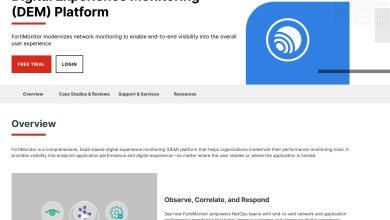
When it comes to the success of businesses, the manner in which they comprehend and respond to risk clearly correlates with their levels of success. Approaches that enable more consistent and coherent decision-making are required because it is necessary to make choices that will support and aid the attainment of the organisation’s goals. Risk management is already “integrated” since it is a natural part of how people make and implement those decisions.
Strong competencies in business management are beneficial to possess in any organisation and across various business sectors. Employees, managers, and leaders in businesses ranging from start-ups to organisations that have been around for a long time may differentiate themselves from their peers by studying business management and being familiar with the fundamental concepts of managing a company. Those professionals willing to enhance their aptitudes should consider pursuing online short business management courses, with one leading program offered by the University of Cape Town.
Uncovering the Different Types of Risks
Before developing a risk response plan, business owners need to thoroughly understand the potential threats. We have identified five critical hazards that company owners may encounter that may hinder them from reaching their objectives.
- Strategic Risks: They closely connect with your organisation’s strategy and may impede a company’s ability to reach its objectives. They might be the result of ineffective strategic planning or improper implementation.
- Operational Risks: These risks might involve problems in your day-to-day operations, technological difficulties, or personnel challenges.
- Financial Risks: These may include both incoming and outgoing cash flows. In some scenarios, the likelihood of this occurring is high. Most of the time, financial risks are the most difficult to manage since they might affect supplier payments and employee salaries.
- Compliance Risks: If your firm does not comply with all applicable rules and regulations, it may suffer a compliance risk. Even if your organisation has grown and you have ceased monitoring compliance procedures, it is still possible for a violation to arise.
- Reputational Risk: Regardless of the size of a firm, maintaining a positive reputation is crucial to its continued success. Reputational harm may result in income loss, loss of business partners, and loss of customers, as well as staffing problems. It is vital to have an effective company plan in place to protect against this risk.
It is essential to make risk-based decision-making an intrinsic component of every choice that is made in a firm for a business to go beyond the assessment phase of risk management. This will allow the business to move on to the mitigation phase of risk management. This covers strategic choices, operational decisions, and tactical decisions that are frequently neglected, which are made by the teams working directly on the front lines.
Steps for Deploy Business Risk Management
Ongoing risk analysis and evaluation entails comparing exposure levels to a preset tolerance level, the degree of control, prospective or current losses, and advantages and possibilities given by the risk. Risk = Probability x Consequences is one of the simplest models for determining controls’ cost and appropriateness.
It is vital to evaluate internal and external risks when assessing the firm’s exposure to risk. Internal risks might include personnel, the business’s physical location and location, threats to its goodwill and reputation, and information technology. Clients and both existing and future rivals might be external hazards.
Before reaching an educated and intelligent judgement, the overarching objective is for those in charge of running a company to consider all of the possible consequences, or all of the option alternatives, for that matter. Exploring several possibilities is a natural method to assist stakeholders in thinking about the long-term implications of a decision and how those implications compare to the other choices on the table. These processes decrease judgement mistakes while enhancing insights, ultimately resulting in improved decision-making. The quality of choice is improved when a risk assessment is carried out on each potential outcome. This results in an increased likelihood of outcomes that are preferred.
Implementing Risk Management in Business Decision-making
Incorporating effective risk management should include adopting methods to impact existing processes to enrich and improvise rather than necessarily replace or expand them. Daily decisions, both big and small, make or break a business. There are situations where it just takes one poor choice to jeopardise an organisation’s existence. Subsequently, the risk management process assists decision-makers in investigating and selecting the most advantageous options associated with a strategic choice.
Ultimately, executives should strive to cultivate a culture of risk management. This underlines the significance of risk management as an integral element of each employee’s day-to-day actions at all organisational levels. The objective of instituting a risk management culture is to foster an environment where partners and employees automatically evaluate risks and consequences while making successful operational choices.




